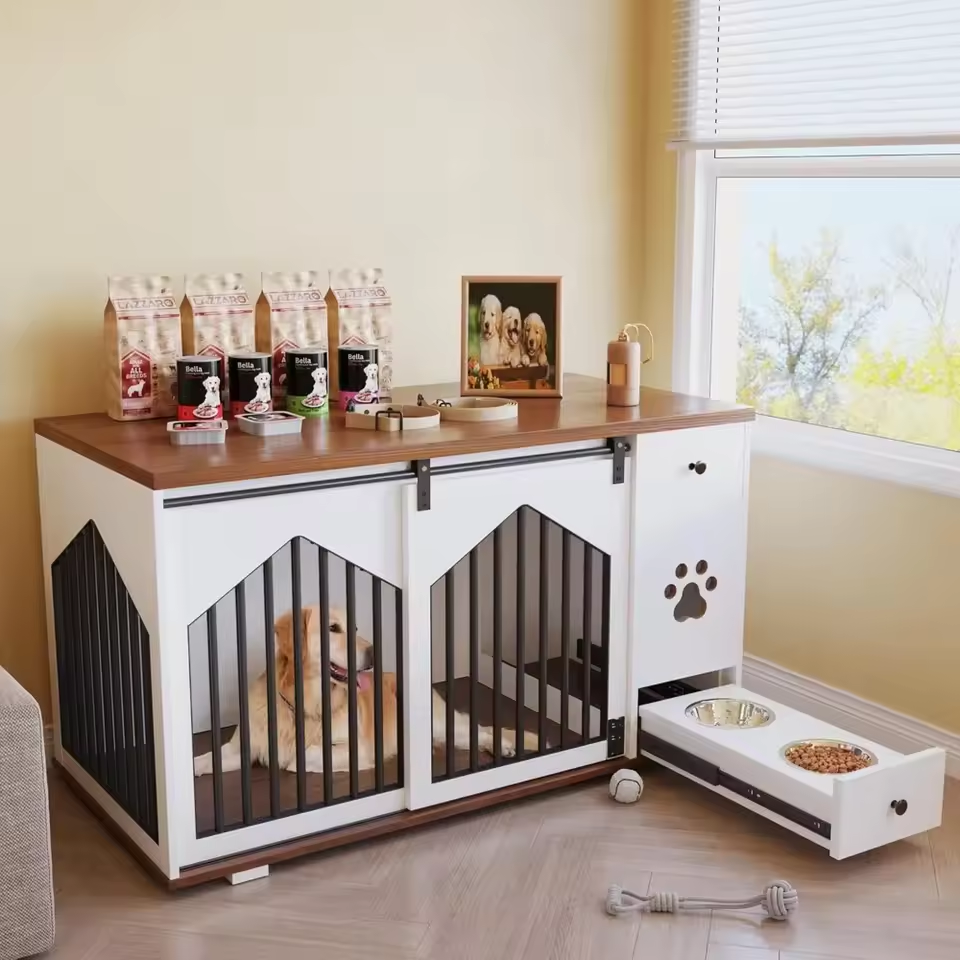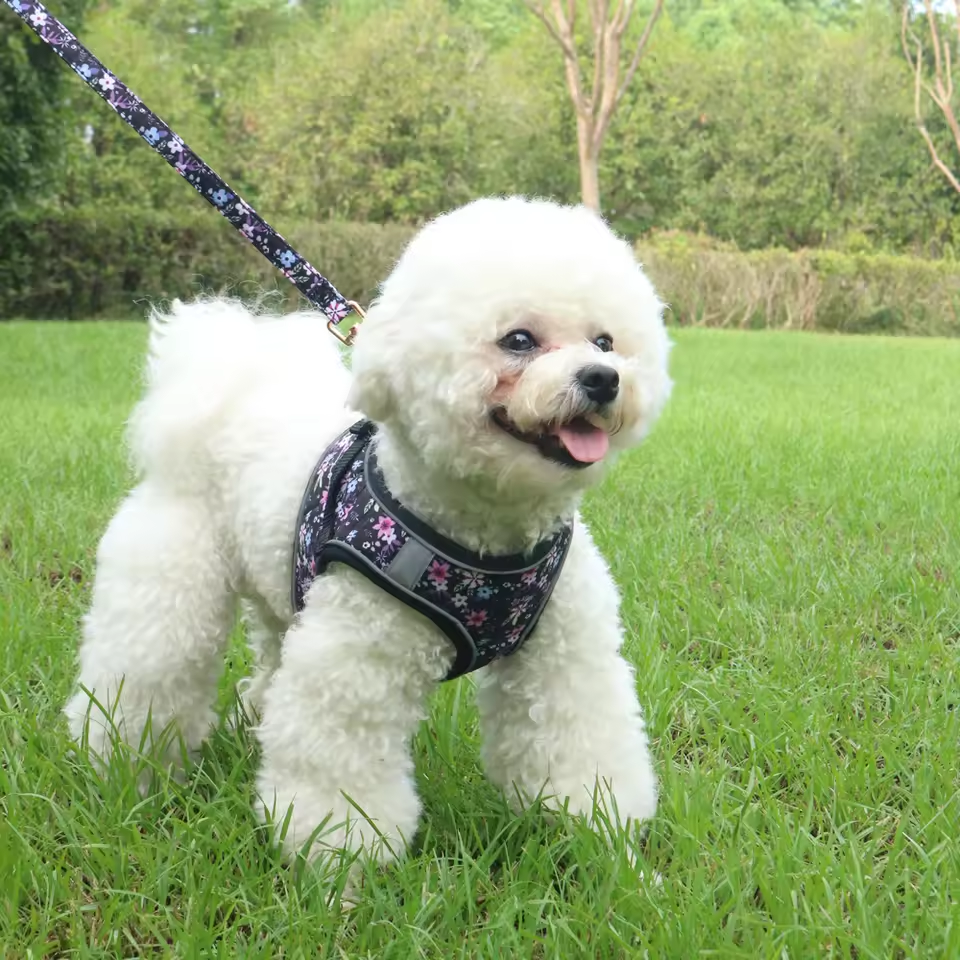Teaching your dog tricks is a fantastic way to bond, stimulate their minds, and impress your friends. One particularly adorable trick is the “paws up,” where your furry friend balances on their hind legs with both front paws placed on a designated target. This impressive pose isn’t just for show, though! It strengthens core muscles, improves balance, and reinforces basic obedience cues.
So, how do you get your dog to become a pawsome pro? Let’s break down the training process into easy-to-follow steps.
Contents
Gathering Your Supplies
Before you begin, ensure you have everything you need for a successful training session. Here’s your checklist:
- High-value treats: Choose treats your dog absolutely loves. Small, soft pieces work best for easy consumption during training.
- Clicker (optional): A clicker is a handy tool that marks the exact moment your dog performs the desired behavior. This precise timing helps with clear communication.
- Target platform: This can be a sturdy box, low stool, or even a book. The platform should be secure and the right height for your dog to comfortably place their paws on.

Setting the Stage for Success
- Location, Location, Location: Find a quiet, distraction-free area for your training session. This will minimize distractions and help your dog focus on you.
- Keep it Short and Sweet: Start with short, five-minute sessions, especially for younger puppies. Their attention spans are limited, and shorter sessions prevent frustration.
- Positive Reinforcement is Key: Use positive reinforcement techniques throughout the training process. Reward your dog with treats, praise, or a combination of both for desired behaviors. Avoid yelling or punishment, as this can hinder progress and damage the bond between you and your dog.
Let’s Get Training!
Step 1: Capture the Interest
Introduce your dog to the platform and let them explore it at their own pace. Scatter some treats on top to entice them to step onto it. Reward any interaction with the platform with praise or a click (if using a clicker).
Step 2: Luring and Shaping
Hold a treat in your closed hand and slowly move it upwards, just out of reach, in front of your dog. As your dog naturally follows the treat with their nose, their paws might brush against the platform. The moment their paw makes contact, reward them with the treat and praise.
Step 3: Gradually Increase Difficulty
Once your dog consistently touches the platform with their paw, gradually increase the difficulty. Wait for them to place more weight on their paw before rewarding. Eventually, you want them to fully step onto the platform with both paws.
Step 4: Introduce the Cue
As your dog becomes more confident placing both paws on the platform, introduce your verbal cue, such as “paws up” or “up.” Say the cue just before they perform the action, then click and reward.
Step 5: Fade Out the Luring
With consistent practice, you can gradually fade out the luring technique. Simply hold your hand with the treat near the platform, without moving it upwards. Reward your dog when they offer the “paws up” behavior on their own.
Step 6: Proofing the Behavior
Once your dog reliably performs the “paws up” cue in a controlled environment, it’s time to test their skills in different situations. Try the cue in various locations, with distractions present, and at different distances. Reward every successful attempt to solidify the learned behavior.

Troubleshooting Tips
Rushing Through the Process: Don’t rush the training process. Move at your dog’s pace and break down the steps into smaller, achievable goals.
Getting Frustrated: If you or your dog get frustrated, take a break. Come back to training later when both of you are calm and focused.
Lack of Focus: If your dog struggles to focus, shorten training sessions or try a different location.
Celebrate the Journey!
Remember, training your dog should be a fun and rewarding experience for both of you. Celebrate every success, no matter how small. With patience, consistency, and positive reinforcement, your dog will soon be mastering the “paws up” trick and leaving everyone in awe!
Bonus Tip: Once your dog has mastered the basic “paws up,” you can add a fun twist! Try teaching them to “high five” by extending your flat hand towards the platform as they place their paws on it.

Tailor it to your Dog:
Every dog learns at their own pace. Be patient and adjust the training process to their individual needs. Some dogs may grasp concepts quickly, while others require more repetition. Keep the sessions positive and engaging, and celebrate even small victories.
End on a Positive Note:
Always finish your training sessions on a successful note. This leaves your dog with a positive association with the training and encourages them to look forward to the next session.

Be Consistent:
Consistency is key to successful dog training. Practice the “paws up” cue regularly throughout the day, even if it’s just for a few repetitions. Short, frequent sessions are more effective than long, infrequent ones.
Make it Fun!
Dog training should be enjoyable for both you and your dog. Incorporate games and positive reinforcement to keep your dog engaged and motivated. Use a playful tone of voice, smile, and shower them with praise when they succeed.

Enroll in a Class (Optional):
Consider enrolling in a dog training class for additional guidance and socialization opportunities for your dog. This can be a great way to learn new training techniques, connect with other dog owners, and receive feedback from a professional trainer.
Beyond the “Paws Up”:
Once your dog has mastered the “paws up” trick, you can explore teaching them other fun and useful commands. Basic obedience skills like “sit,” “stay,” and “come” are valuable for everyday life. You can also delve into more advanced tricks like “shake,” “roll over,” or “play dead.” The possibilities are endless!
The Power of Positive Reinforcement:
Positive reinforcement is the foundation of successful dog training. By rewarding your dog for desired behaviors, you encourage them to repeat those actions in the future. This builds a strong bond between you and your dog, fosters a positive training environment, and promotes better communication.
Building a Well-Rounded Pup:
Teaching your dog tricks is not just about showing off. It provides mental stimulation, strengthens their muscles, and improves their overall well-being. Furthermore, the training process itself fosters communication and builds a stronger bond between you and your furry companion.
By following these tips and using positive reinforcement techniques, you can transform your dog training sessions into fun and rewarding experiences. With patience, dedication, and a little creativity, you’ll be amazed at what your dog can learn! So grab those treats, find a quiet space, and embark on this pawsome training adventure with your canine best friend!


